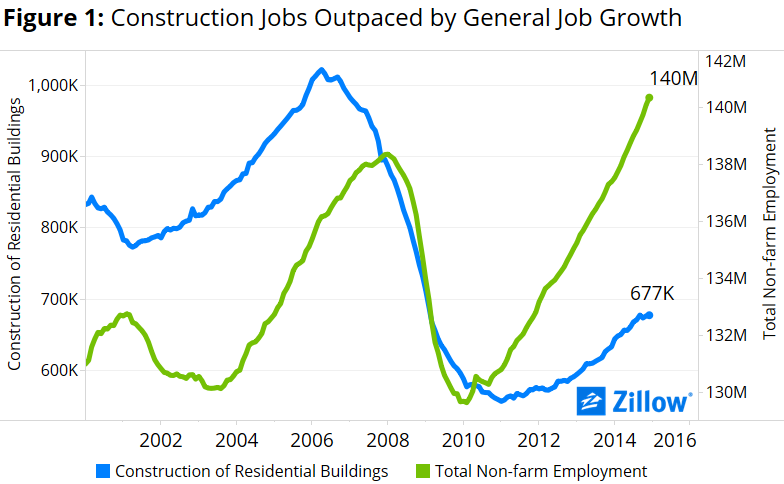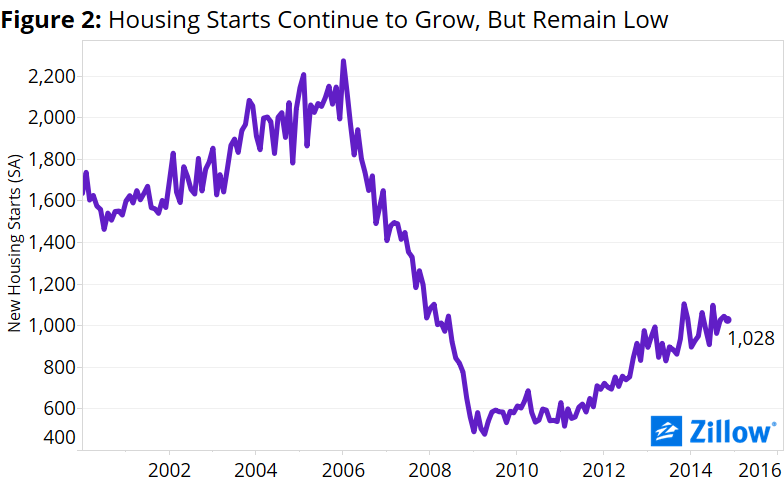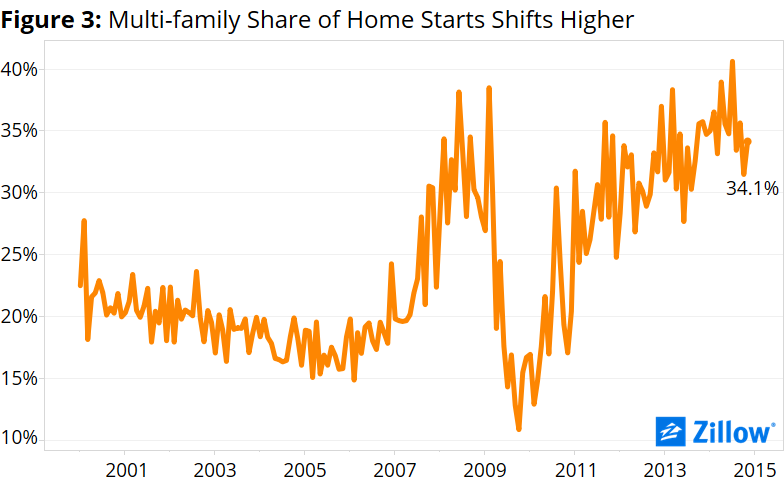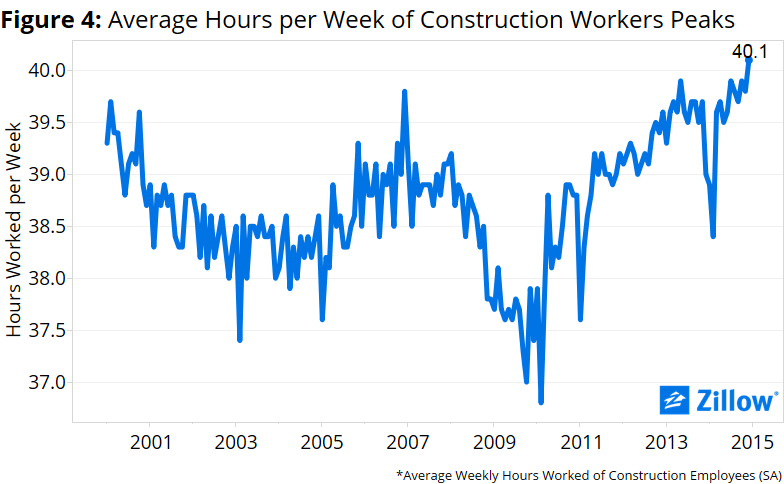- Fewer homes are getting built, so there’s less need for construction workers.
- Those homes that are getting built – largely multi-family homes – require fewer workers per job.
- Instead of hiring more workers, construction bosses are asking existing employees to work longer hours.
In many respects, the housing market has recovered significantly from its early 2012 lows. Prices are recovering, negative equity is receding and confidence in the housing market is rising. But if this is a housing recovery, where are the housing construction jobs?
Historically in America, the housing market has been a job creation machine. But over the past three years, construction employment has barely budged, even as overall employment has steadily improved. During the recession, the economy shed almost 450,000 jobs in residential construction. Since the first quarter of 2012, the construction sector has only recovered roughly 100,000 of those jobs, less than a quarter of the ones that were lost. In contrast, overall employment (total, nonfarm) has already significantly exceeded its pre-recession peak (figure 1).
So, why has construction employment been so slow to pick up? Essentially, it’s because:
- Fewer homes are getting built.
- Those homes that are getting built don’t require as many workers.
- Construction bosses are asking their existing workers to do more work, instead of hiring more workers.
Less Workers, Doing More Work
New housing starts fell dramatically at the start of the recession and have yet to recover (figure 2). Starts peaked prior to the recession in January 2006, at a seasonally adjusted annual rate (SAAR) of more than 2.2 million. As of November, the pace of new home starts was only slightly more than 1 million (SAAR), or less than half the pace recorded during the housing boom. With less new construction, there is less need for construction workers.
There has also been a shift in the kinds of homes that are getting built. Since the housing bubble burst, a higher than normal fraction of construction has been for multi-family units. Normally, about 20 percent of housing starts are for multi-family units. Currently, this number is more than 34 percent and has been elevated for quite some time (figure 3).
This is an important distinction, because building multi-family housing generally involves significantly less labor than building a single-family home. Each single-family home started creates 3.7 jobs over the ensuing year, compared with 1.8 jobs for each multi-family home, according to an analysis from Moody’s Analytics. So, a higher share of multi-family starts requires a smaller number of construction workers.
Finally, employers are asking the workers they already have to work more, rather than hiring new employees. Since 2010, the average number of hours worked for those already employed in the construction sector has risen more than 10 percent (figure 4).
Despite the bleak current picture, there are some signs pointing to a brighter 2015. As housing starts continue to increase, they should move more in line with historical norms – especially if more single family home construction begins. And employers may need to hire additional employees to do this work, rather than rely on existing employees, since historically, workers have resisted working much more than 40 hours a week.



